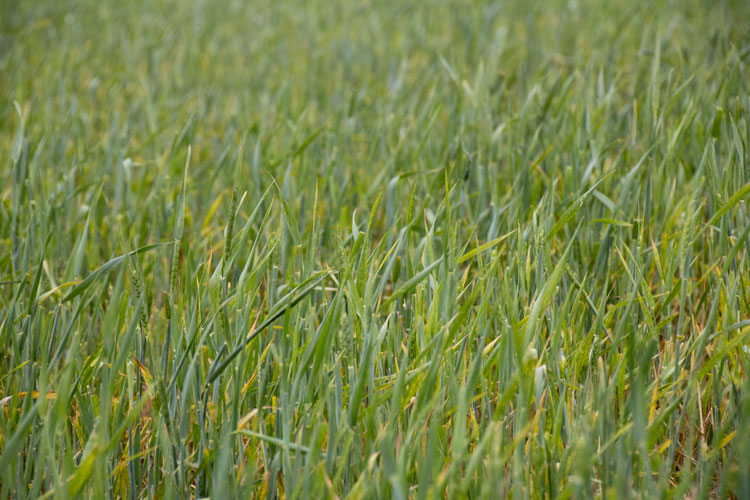
Rather than planting the same crop in the same field year after year, rotating between two or more crops is the healthier route to go. Crop rotation improves yields, reduces erosion, expands water availability, and so much more.
Corn and soybeans are a very common crop rotation, but why stop there? University of Wisconsin-Madison’s Lindsay Chamberlain talked about adding winter wheat to a rotation during a field day hosted by the Dodge County Farmers for Healthy Soil-Healthy Water.
Chamberlain, a graduate research assistant in agronomy, shared several benefits of incorporating winter wheat into a rotation. One benefit is the ability to spread financial risk to an additional crop. Winter wheat also spreads out cash flow, as it is harvested at a different time of the year than corn or soybean. This can also disperse labor needs.
The addition of winter wheat can also increase the length of the rotation through improved weed, disease, and nutrient management. Furthermore, Chamberlain said that it is a good opportunity to try a cover crop.
Some challenges that may come with adding winter wheat is that it is an additional crop to learn about and manage. There is also the potential for winterkill, but Chamberlain pointed out that even if the crop does not survive winter, there is still time to plant something in the spring. In the Midwest, winter wheat should be planted before October 10. If planted later, she recommended planting more seeds per acre.
Another factor to consider is having the time – and good timing – to get the winter wheat planted during soybean or corn harvest in the fall.
After highlighting these factors, Chamberlain shared data that showed an extended crop rotation improved grain yield in all the crops, but the sequence of the rotation made a difference. A corn-soybean-wheat rotation yielded the best results.
She also showed numbers in terms of profitability. In years when prices are fantastic, a corn and soybean rotation performs better monetarily. When prices are not as strong, like now, a rotation with winter wheat in the mix does a little better.
Of course, the dollars and cents are important, but some benefits are hard to put a number on. A crop rotation that improves your fields is one of those pros.
“Adding winter wheat is an investment in soil health,” Chamberlain said. “And soil health is a long-term investment.”








